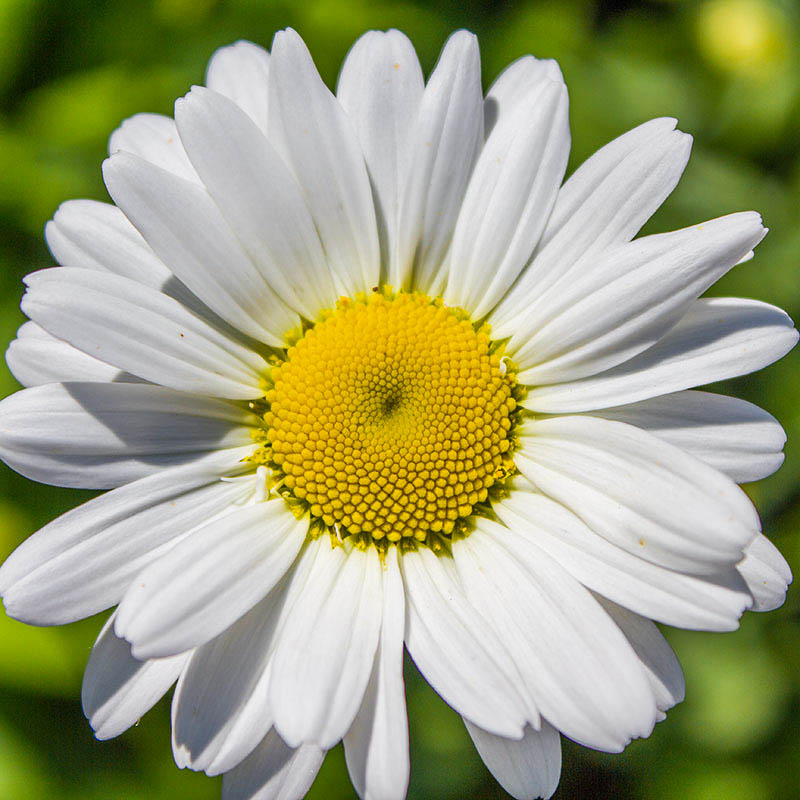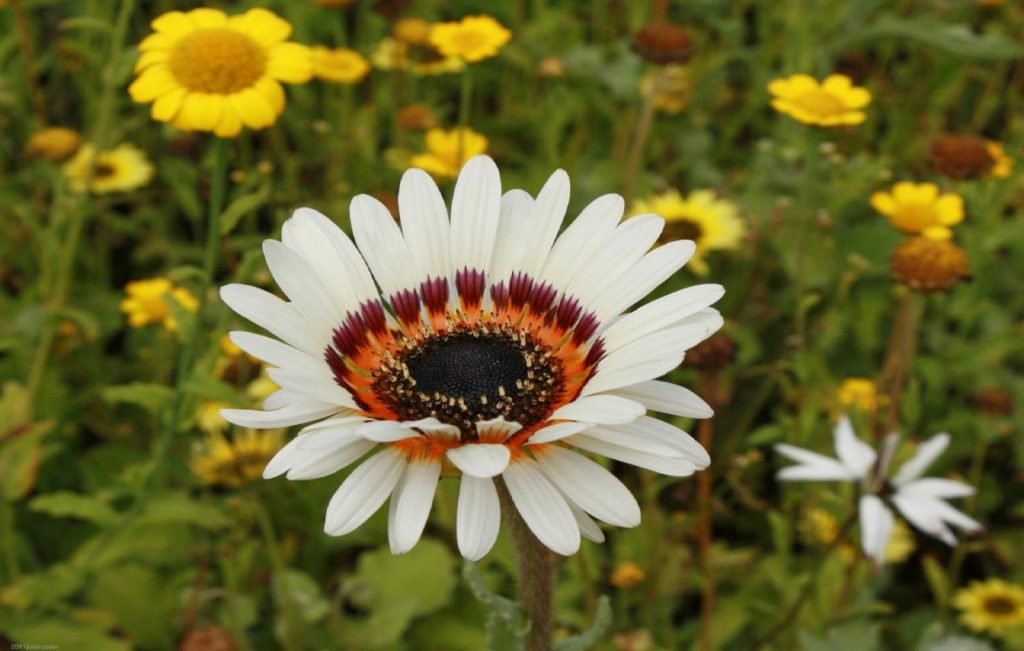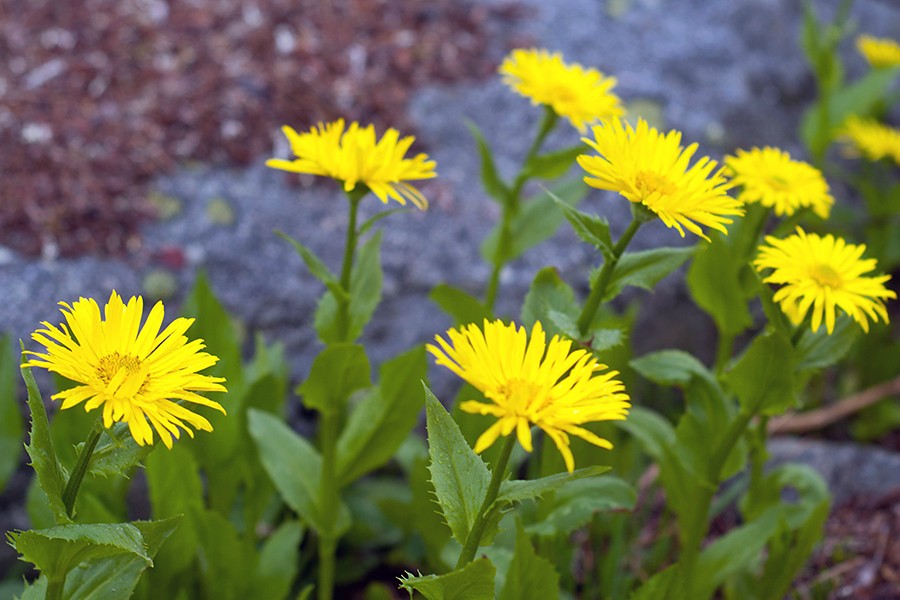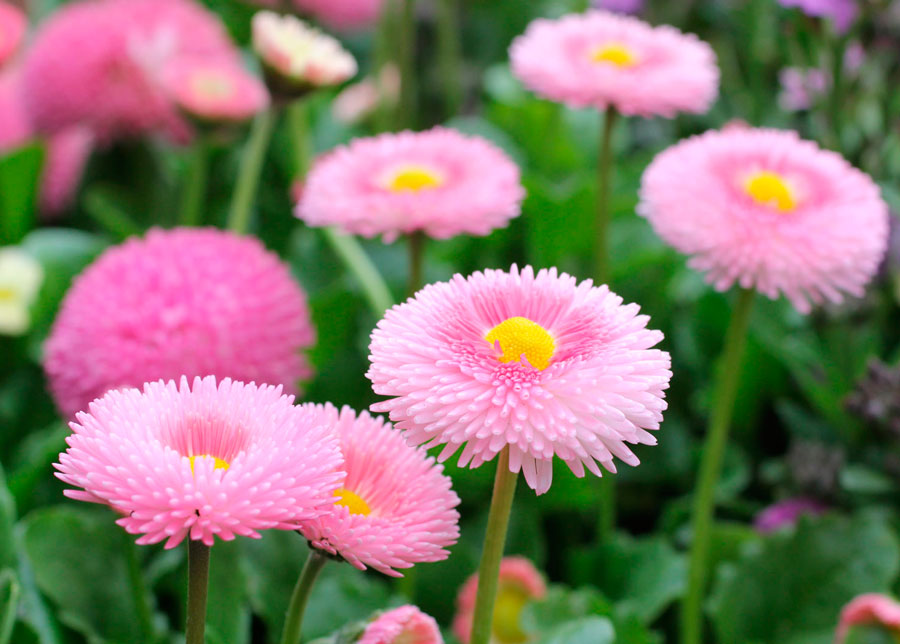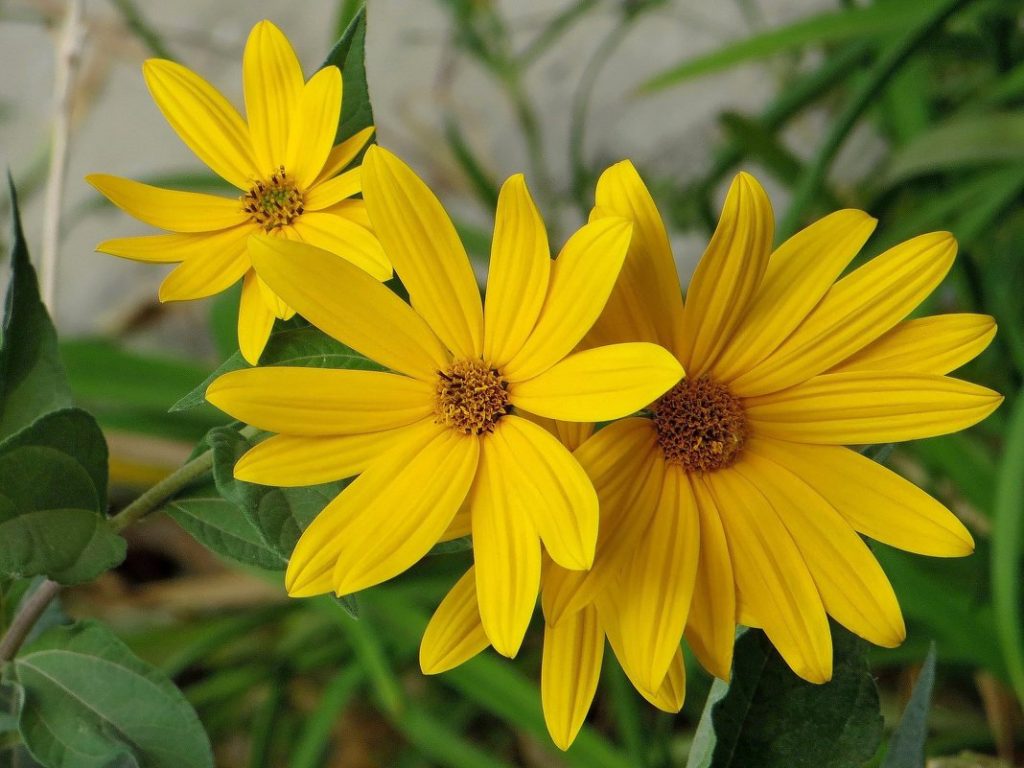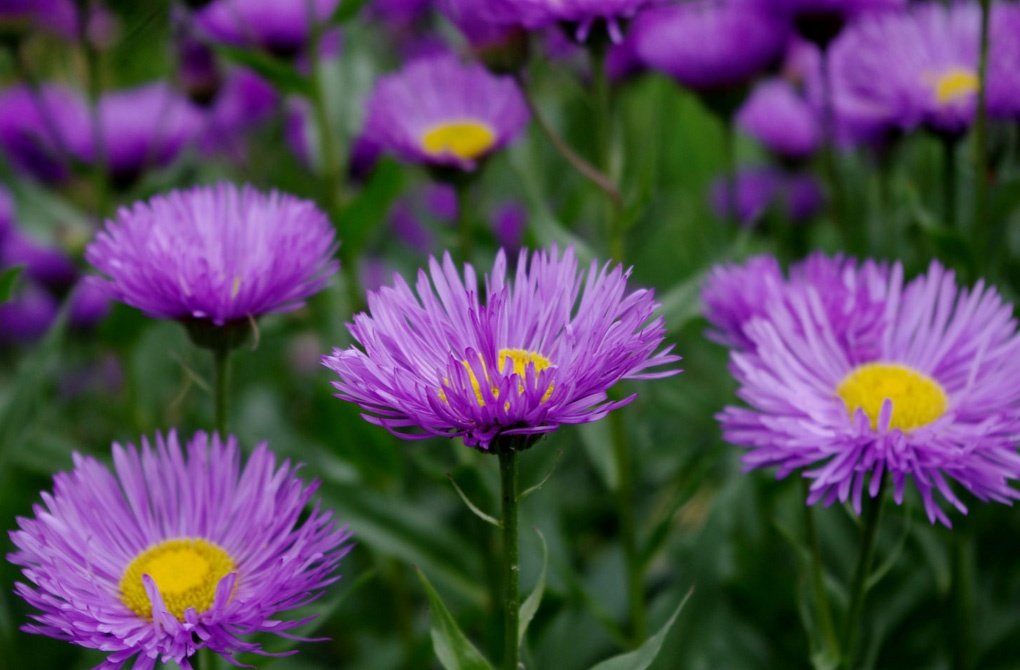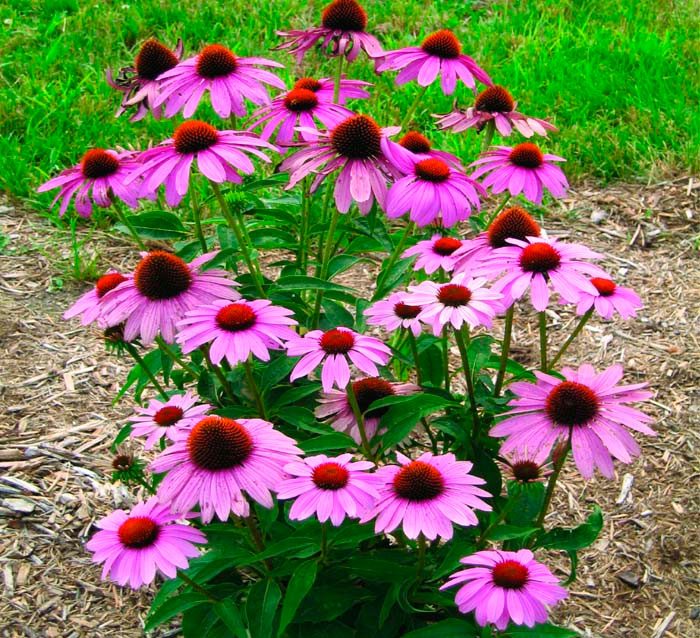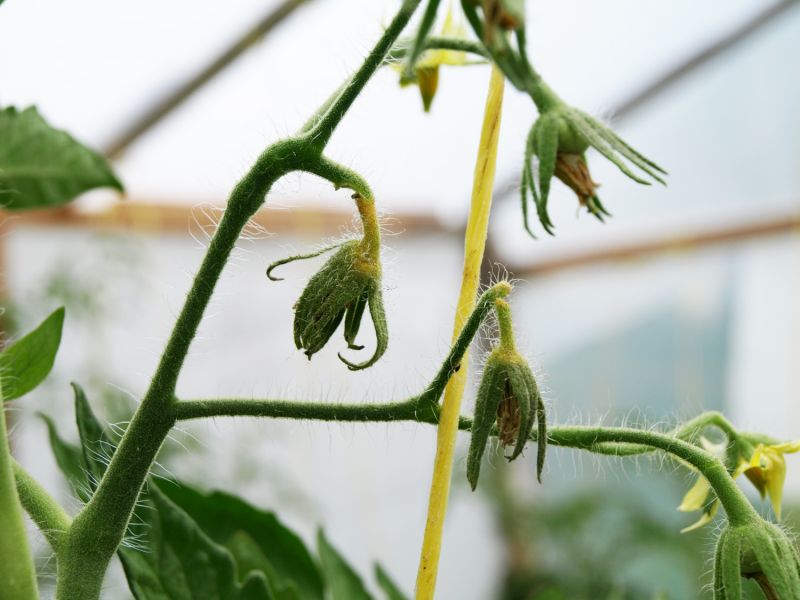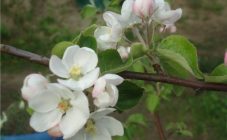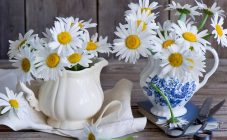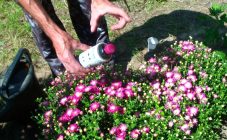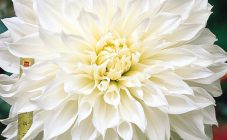The sun with white rays, touching and touching for our soul, a nondescript white flower with a yellow center, if it settles somewhere under the fence alone, you walk and you won't notice ... And how the whole roadside or field blooms with daisies - you can't take your eyes off and can't calm your soul ...
Lovers, describing the flower they like, the name of which they do not know say:
- multi-colored chamomile;
- colored chamomile;
- red chamomile;
- what are the names of flowers that look like multi-colored daisies;
- yellow chamomile;
- a flower like a daisy only colored;
- purple, chamomile-like;
- flowers that look like chamomile;
- flowers like daisies only multi-colored as they are called I don't know;
- blue, but he himself is like a daisy.
For such novice gardeners and amateurs who want to purchase and grow a plant they like in their garden, information on flowers similar to chamomile is provided below.
Names and characteristics of "colored daisies"
There are a great many types of such flowers, and even each has many different varieties, with many different colors, so it is worth dwelling on the main and most common ones:
- Arctotis is a lovely, overseas visitor to our gardens, originally from South Africa. There are many colors, the whole gamut from white to bright red. There are also many options in height - from stemless, creeping on the ground, to one and a half meter height, depending on the species. The handsome man, with pronounced flowers and beautiful greenery, will decorate any, even the most sophisticated garden.
- Alpine aster, a perennial plant, perfectly wintering in a harsh climate without shelter, unpretentious and picky, 20-30 cm high. It is often called alpine chamomile. Long bloom, throughout the summer. Perfectly takes root in a new place. Coloring from white to dark purple, all shades of blue and pink. Very similar to chamomile varieties with white petals. It gives a special charm to the alpine slides.
- Venidium, also a guest from the African continent. It is grown in our country as an annual crop, while at home it was a perennial. Long stalks bear flowers of white, orange, pink and yellow flowers. The black core is bordered by a ring of dark color, brown or purple, brown or burgundy. Flower diameter up to 14 cm, long flowering, from June to snow.
- Gatsania, the second name is Victoria. Warm and light-loving African guest, can be grown in a pot as an indoor perennial plant. Sometimes called African chamomile, midday gold, a graceful and beautiful plant with a long flowering period. Low, from 20 cm to half a meter, with amazing variegated flowers, all kinds of shades with bright stripes on the petals.
- Gelikhrizum, aster family, the second name is a golden heart, cat's paws. Homeland - Australia and Africa. Reaches a height of 80 cm, the color is white, yellow or orange, varieties with variegated and multi-colored petals are often found. When dry, it does not lose its bright color and therefore is used as dried flowers.
- Gerbera, or transvaal chamomile. A beautiful flower, a little more than half a meter high, the colors are bright and clear, of any tone, except for blue and blue. It is perfectly stored in a cool basement in winter, in about the same conditions as dahlias. Loves light and water, but does not tolerate stagnant water.
- Goat or doronicum, or yellow chamomile. A short flower that grows throughout Eurasia in a wild culture. In gardens, it is used to decorate mainly alpine slides.
- Calendula, popularly - marigolds, orange chamomile. In nature, it grows in the Mediterranean Sea and Western Europe. Blooms nonstop all summer, driving out more and more new flower stalks. It has been cultivated in garden culture for a long time and has many varieties with different colors - white, lemon, cream and orange, and double forms are also bred.
- Kosmeya, or Cosmos, Mexican aster, a magnificent flower for a novice gardener, unpretentious and unpretentious, grows self-seeding even around garden plots. The mixture of colors - pink, red and white, is always eye-catching and eye-catching. Up to 80 cm high, graceful small elongated leaves. Photophilous and resistant to cold weather.
- Coreopsis, a sun-loving perennial, winters in the middle lane without shelter, a shrub from half a meter to a meter, depending on the species, mainly yellow flowers, sometimes pink.
- Daisies, cute, low flowers, are called in Europe - a small pearl, for their diminutiveness and beauty. The middle of the flower is always yellow, the petals are from white to deep pink. Bushes up to 20 cm high, when the rain approaches, the flowers close and tilt to the ground. It is cultivated in the form of a biennial. An unpretentious plant, blooming from spring to autumn, tolerates partial shade perfectly.
- Osteospermum, Cape chamomile, blue-eyed chamomile, herbaceous annual or perennial shrub in southern regions. The blue core is framed with white, purple, pink, orange or yellow petals. It blooms profusely throughout the summer season and tolerates drought well, as well as frost up to several degrees.
- Feverfew, native to Asia, Europe and North America. Pink or white petals frame the yellow center. A shrub up to a meter high, popularly called a priest.
- Ornamental sunflower, or helianthus. The largest flower in gardens, similar to a daisy. All day his huge hat spins after the sun, constantly following him with his gaze. Beautiful and decorative when cut, keeping freshness for up to two weeks. The petals of yellow and brown tones, up to rich burgundy in some varieties, look solid and stately.
- Rudbeckia, a visitor from central North America. She is sun-loving and unpretentious in care. A golden flower with variegated petals, Americans call it Black-Eyed Suzanne, the Russian folk name is Sun Hat. It is very beautiful and decorative, it looks great when cut, some varieties reach a height of two meters.
- Jerusalem artichoke, a tuberous plant, tubers winter well without shelter, came to us from Brazil.
The tall bush is strewn with bright yellow flowers with long petals. Cultivated as a vegetable, but also looks great in a flower garden. If allowed to grow uncontrollably, then in a few years it will flood everything around.
- Ursinia, an unpretentious plant native to South Africa, has orange-yellow shiny flowers that will impress lovers of yellow daisies. Reaches a height of 60 cm, there are varieties of white and purple. Long bloom, from July to late September.
- Chrysanthemum, has many forms and varieties around the world, where it moved from China, is especially popular and loved in Japan. Height from 30 cm to one and a half meters, chamomile resembles a crowned chrysanthemum, alpine chrysanthemum. Chrysanthemum keeled strikes the imagination with its brightness of color and concentric circles on the petals, with clear boundaries. Shrub chrysanthemum also has flowers of a simple shape, similar to chamomile or cosmos flowers.
- Echinacea, came to us from North America. Perennial shrub, up to one and a half meters high, pink chamomile, with petals of pink, cream, yellow, brown-red, violet and purple tones. Needs a fertile soil type and regular watering.
- Erigeron, a herbaceous perennial, purple daisy blooming from June to October.The petals are narrow, like needles, colors from white to lilac, any tone, up to red. Flowers are small, low growth, up to half a meter.
Tips and tricks from experienced summer residents
The so-called garden chamomiles, perennial and multi-colored, can be grown in any climatic zone, if cultivated as annuals.
Flowering in annuals is long, unlike perennials, an annual flower will delight with its flowering for several months in a row, throwing out more and more flower stalks and inflorescences.
Small, field and ground cover plants will wonderfully decorate an alpine slide with a rock fill, and can also be used to decorate a border and similar edging in flower beds. Tall and massive shrubs may well be planted in clumps on lawns, the grass of which will perfectly set off bright multi-colored flowers and flaunt all their splendor.
Large flower beds are difficult to design and require considerable experience in order to know exactly which flower to plant where and exactly imagine what it will be like when it grows and how much space it will take. Therefore, novice gardeners and summer residents can be advised not to engage in the construction of large flower beds with an abundance of plants. It is better to set up many small flower beds, in which two or three types of plants will coexist.
The so-called multi-colored daisies perfectly coexist and harmonize with groups of monochromatic and discreet flowers, or generally with nondescript flowers, but very decorative leaves. So, for example, unpretentious daisies make an indelible impression if they are planted with a border around the curtains of hosts. Decorative hosta leaves set off the transparency and prettiness of daisies, enhance the impression of this unpretentious flower.
Tall plants like echinacea, Jerusalem artichoke, rudbeckia perfectly coexist with ornamental shrubs like cotoneaster or turf, spirea or snowberry. Also, joint planting of annuals and perennials early in flowering in the same flower bed is encouraged. The early flowering of perennials will adorn the flower garden in spring and in the first month of summer, when annuals will only increase the green mass. And in July and subsequent months, bright annuals will delight the owner of the flower garden with a riot of colors and various color combinations.
Decorative sunflowers look great both in a single planting and in a group; a planted row near the wall of a building or a fence makes a special impression.
The dried gelichrizum will retain its shape and color, decorate the interior of the house in the long winter months, and remind you of the hot summer.
For lovers of multi-colored daisies, there are a huge number of plants, many varieties of various shapes, colors, growth and winter hardiness have been bred, both annuals and perennials. All this will make flower beds and flower beds, country and garden plots catchy and bright, non-standard and memorable. It will allow you to spend time in the garden or in the country, resting your soul and finding peace in absolute harmony with nature.
